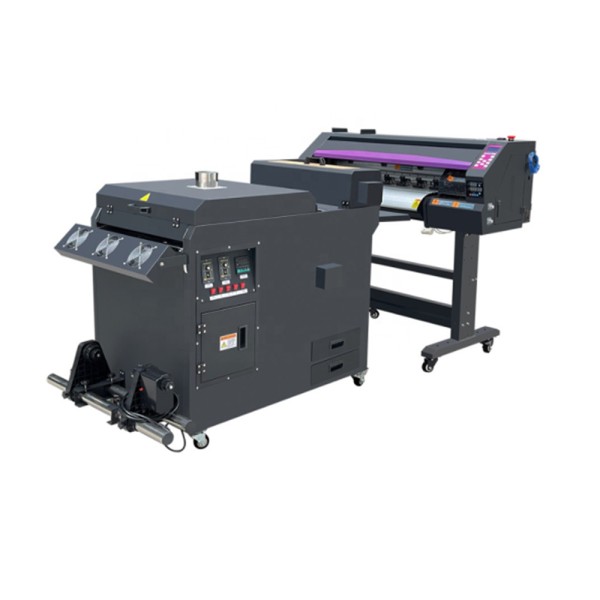Understanding DTF Printing: Idea for Achieving Vibrant and Durable Prints
In the globe of fabric printing, attaining vibrant and resilient prints is a desired ability that can boost the quality of your output. From selecting the right materials to fine-tuning print settings and refining post-printing completing methods, there are many aspects that can influence the result of your prints.

DTF Printing Fundamentals
For those brand-new to the globe of textile printing, understanding the fundamentals of DTF printing is necessary to understanding this innovative technique. Straight to Film (DTF) printing is a modern approach that entails transferring designs from an unique film onto various fabrics making use of a warm press. Unlike traditional approaches like screen printing, DTF offers benefits such as dynamic colors, detailed outlining, and the ability to publish on diverse products like cotton, polyester, and blends.
The process starts by publishing the style on a special DTF movie using a suitable printer with CMYK or CMYKW ink sets. As soon as the style is published, it is after that treated with a heat press to produce a resilient and durable print. DTF printing is understood for its ability to duplicate complicated designs with high accuracy and shade accuracy, making it a preferred choice for organizations wanting to develop personalized clothing, marketing items, and more.
Choosing the Right Products

Just as vital is the option of the glue powder. The adhesive powder acts as a bonding agent in between the published style and the material, so it should have strong adhesion properties to ensure a long-lasting and sturdy transfer. Various materials may require various sorts of adhesive powders, so it is crucial to match the powder to the textile kind for optimal results - DTF Printing. By carefully picking the ideal materials for DTF printing, printers can enhance the quality, vibrancy, and long life of their prints.
Enhancing Publish Settings
When aiming to accomplish the most effective cause DTF printing, careful interest to optimizing print settings is essential for making certain exact and high-quality transfers onto fabrics. One key facet to consider when enhancing print setups is the resolution. Greater resolutions commonly result in sharper and a lot more thorough prints, boosting the overall top quality of the transfer. Additionally, changing the ink thickness can aid accomplish lively shades and make certain that the style attracts attention on the fabric.
While raising the rate can enhance effectiveness, it may compromise the last print's quality and shade saturation. Exploring with different rates and observing the outcomes can assist identify the optimal setup for each print task.
Additionally, make improvements shade profiles and guaranteeing proper shade administration are important for achieving exact and regular shades throughout different prints. By adjusting color settings and accounts, printers can reduce color discrepancies and produce consistent results, boosting the general print quality and consumer fulfillment.
Preparing Artwork for DTF Printing
Transform the art work to CMYK shade setting check my source to ensure that the colors translate precisely from display to print. Keep in mind to mirror the final style before publishing to make certain that it moves appropriately onto the garment. By following these steps and paying close attention to the information, you can prepare artwork that is optimized for dynamic and resilient DTF prints.
Post-Printing Finishing Strategies
Executing effective post-printing ending up methods is important to enhancing the resilience and aesthetic allure of DTF prints on fabrics. When the printing process is full, using heat to the published style is important.
As soon as the film is eliminated, the print may need added treating time to better set the ink right into the textile. This step aids enhance the washability and durability of the print, guaranteeing it can withstand numerous laundry cycles without fading or cracking.
Furthermore, cutting any excess film around the design can offer the last print a clean and specialist look. Putting in the time to correctly end up DTF prints post-printing can significantly influence the general top quality and longevity of the textile style.

Verdict
In conclusion, grasping DTF printing calls for a comprehensive understanding of the fundamentals, choosing proper products, maximizing print settings, preparing artwork efficiently, and making use of post-printing completing methods. By complying with these pointers and methods, one can achieve long lasting and vibrant prints that meet their desired quality standards. Consistent practice and attention to detail are important in achieving successful outcomes in DTF printing.
From selecting the best materials to tweak print settings and perfecting post-printing finishing techniques, there are countless variables that can affect the result of your prints. Unlike standard techniques like screen printing, DTF provides advantages such as vivid shades, complex outlining, and the ability to publish on varied materials like cotton, polyester, and blends.
Once the design is published, it is after that treated with a heat press her response to create a lasting and durable print.When intending to achieve the finest outcomes in DTF printing, meticulous attention to optimizing print setups is vital for making sure accurate and top quality transfers Read More Here onto fabrics.In conclusion, understanding DTF printing needs a comprehensive understanding of the essentials, choosing appropriate products, optimizing print setups, preparing art work efficiently, and utilizing post-printing completing techniques.